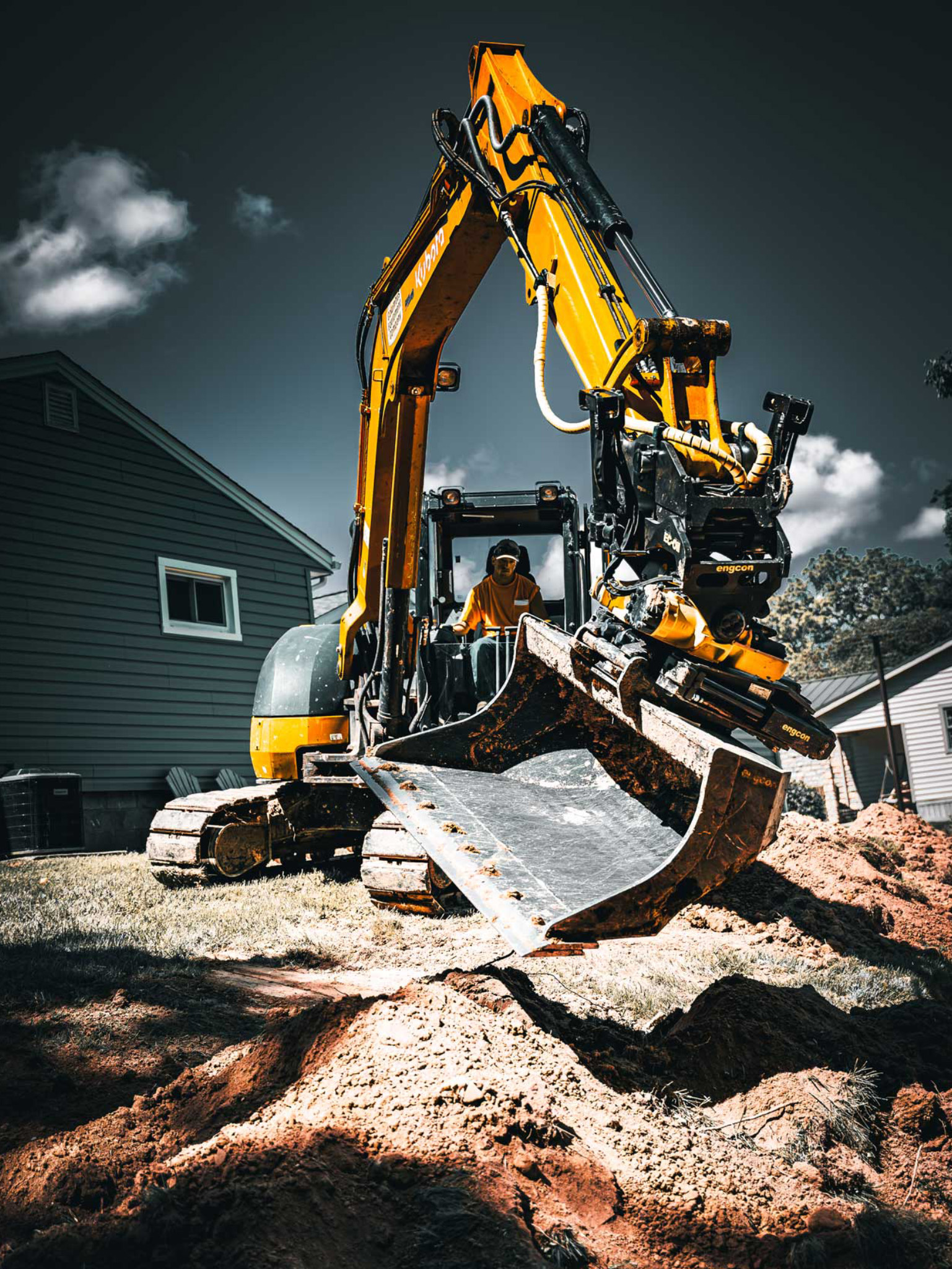Professional Septic Ohio - Relied On Septic Tank Specialists in Ohio
Professional Septic Ohio - Relied On Septic Tank Specialists in Ohio
Blog Article
Revealing the Art of Excavation: Pro Tips for Safe and Efficient Digging
As soil is turned and earth is moved, the ins and outs of excavation reveal themselves, requiring an eager understanding of devices, dirt structure, safety procedures, and ecological considerations. The experience needed to browse these elements properly can indicate the difference between a successful excavation task and a potential catastrophe.
Relevance of Proper Devices
To guarantee the security and effectiveness of any type of excavation job, utilizing the proper tools is extremely important. Excavation tasks differ in range and complexity, ranging from small domestic landscaping tasks to massive building undertakings.
These functional devices come in different sizes to match various job requirements. Mini excavators are perfect for smaller jobs, while larger excavators take on a lot more comprehensive tasks efficiently.
Apart from excavators, various other essential tools includes dump bulldozers, trenchers, and vehicles. Unload trucks are vital for getting rid of and moving excavated products, while trenchers are used for digging deep and slim trenches. Excavators succeed in tasks that call for pushing big quantities of dirt or debris. By investing in the ideal equipment, excavation jobs can be finished safely, in a timely manner, and with precision.
Comprehending Dirt Composition
A comprehensive understanding of dirt composition is essential for implementing excavation projects with precision and security. Recognizing the different types of dirt is essential as it straight impacts excavation methods, tools choice, and overall job efficiency. Soil make-up generally consists of four primary components: sand, silt, clay, and raw material. Each part has unique buildings that affect how soil reacts to excavation processes.
Sand fragments are the biggest and supply great drain yet supply little communication. Silt bits are smaller than sand however larger than clay, supplying moderate water drainage and communication. Clay bits are the tiniest and give high cohesion but poor drainage. Raw material, such as decomposing plant material, impacts soil fertility and security.
Prior to starting excavation, carrying out dirt examinations to determine its composition and features is necessary. This info helps in selecting the proper tools, carrying out safety measures, and creating excavation methods customized to the details soil problems - dump truck companies in ohio. By recognizing dirt composition, excavation experts can enhance job end results while ensuring safety and security and adherence to ideal practices
Precaution and Procedures
Recognizing soil composition is the keystone upon which precaution and procedures for excavation tasks are built, making sure the health of workers and the success of the venture. There are several essential steps that need to be applied to minimize dangers and stop crashes. when it comes to safety and security throughout excavation.
First and leading, before any type of excavating starts, a thorough assessment of the website need to be conducted to identify any potential hazards such as underground utilities, unstable dirt conditions, or nearby structures that could pose a risk. It is important to have a qualified individual manage the excavation process to make certain that all security methods are adhered to purely.
In addition, all employees entailed in the excavation must be correctly trained in risk-free digging practices and the correct procedure of tools. Individual safety equipment (PPE) such as construction hats, high presence garments, handwear covers, and security boots must be worn in any way times to lessen the risk of injuries. lancaster excavation. Normal safety and security conferences and toolbox talks need to also be carried out to maintain all workers educated regarding potential hazards and reinforce secure job practices. By adhering to these precaution and protocols, excavation projects can be completed successfully and without event.
Effective Excavation Planning
When embarking on an excavation project, meticulous preparation is important to make certain effectiveness, safety and security, and successful end results. Reliable excavation planning includes several crucial actions that are vital for the smooth execution of the job.
Once the site assessment is full, the next step is to create a clear timeline and routine discover this info here for the excavation tasks. This includes figuring out the series of tasks, tools needs, and workforce appropriation. Proper scheduling aids stay clear of delays and makes sure that the job remains on track.

Additionally, interaction amongst all team visit the site members is critical during the planning phase. Clear regulations, routine updates, and effective sychronisation are necessary for an effective excavation task. By investing time and effort in careful preparation, excavation teams can significantly enhance performance, decrease threats, and achieve successful results.

Managing Ecological Considerations
With boosting focus on ecological sustainability in building techniques, taking care of environmental factors to consider has ended up being a vital element of excavation projects. Excavation tasks have the prospective to influence the surrounding atmosphere through dirt erosion, debris runoff, habitat interruption, and contamination of water sources. To alleviate these risks, it is important to execute ideal methods that prioritize environmental management.

In addition, correct waste monitoring is crucial to prevent soil and water contamination. Implementing treatments for the disposal of dangerous materials, recycling of waste products, and decreasing the usage of unsafe chemicals can dramatically lower the environmental impact of excavation projects. By integrating these techniques right into excavation planning and execution, building companies can guarantee that their projects are not only safe and effective however additionally ecologically liable.
Final Thought
In conclusion, understanding the art of excavation needs an extensive understanding of proper tools, dirt composition, safety and security steps, and effective preparation. By complying with these standards and taking into consideration environmental variables, excavations can be conducted securely and efficiently. It is critical to focus on security and productivity in every excavating task to make sure successful end results.
As soil is transformed and earth is relocated, the intricacies of excavation expose themselves, demanding an eager understanding of tools, dirt composition, safety and security protocols, and ecological considerations.To make sure the safety and effectiveness of any excavation task, utilizing the proper equipment is vital.A comprehensive understanding of dirt composition is essential for executing excavation projects with accuracy and safety and security. Comprehending the various kinds of soil is crucial as it directly influences excavation approaches, equipment choice, and total project effectiveness. By understanding dirt structure, excavation specialists can boost job outcomes while making sure safety and security and adherence to best methods.
Report this page